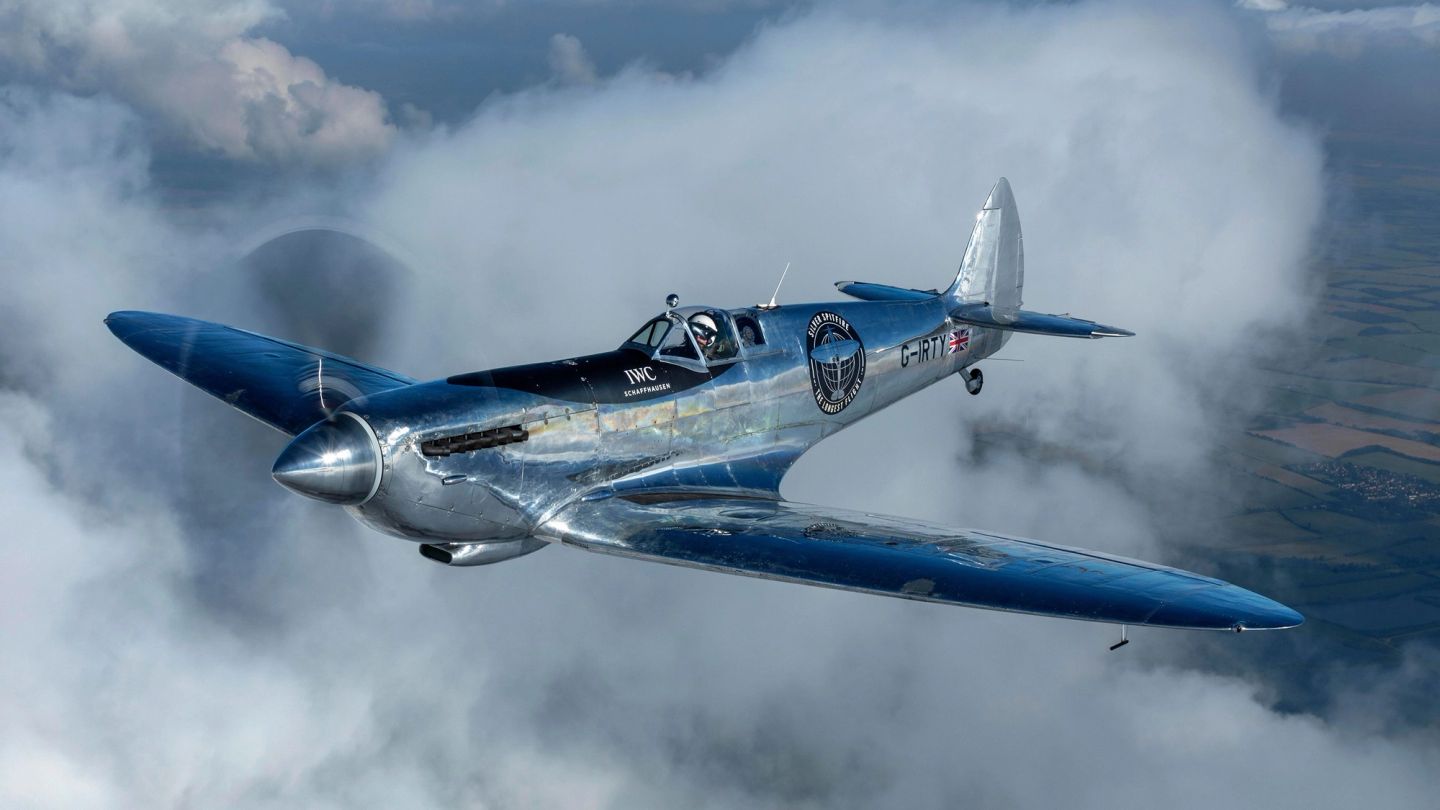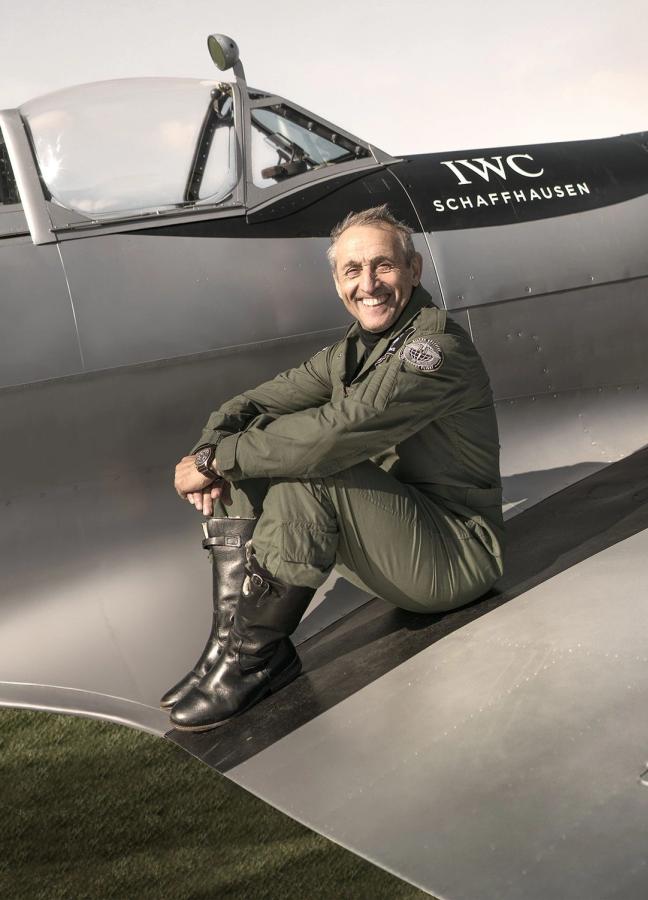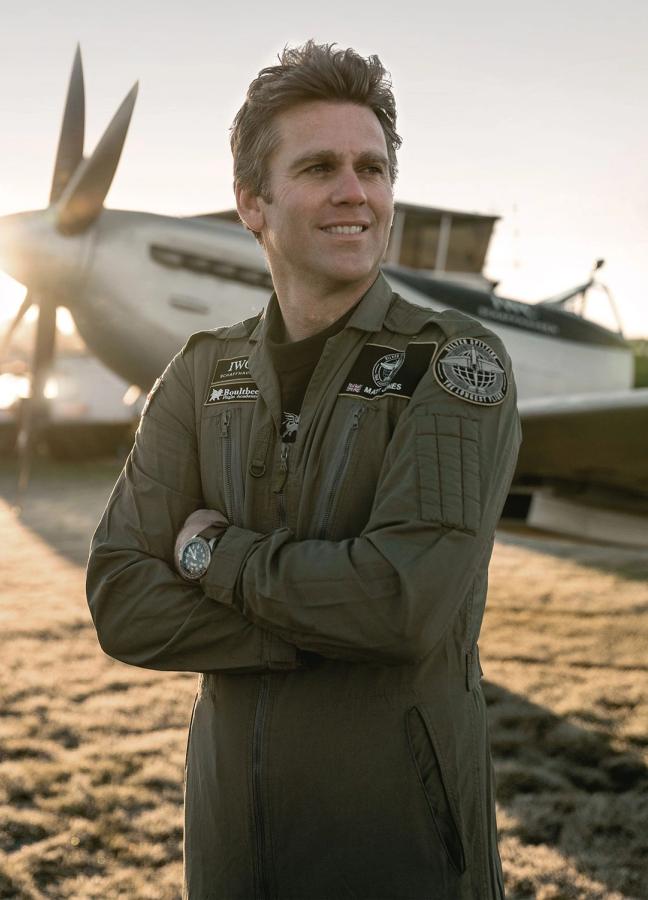

Words: Zoe Dickens
It was a celebration of all things quintessentially British at Goodwood Aerodrome on 5 August. Pimms and pale ale flowed while honey roast ham, pies and crab rolls were dispensed from bunting bedecked vintage trucks and guests basked in the warm afternoon sunshine after a classically English morning of mist and drizzle.
The 500 attendees, comprised of VIP clients, press and plane enthusiasts, had gathered for the launch of The Longest Flight – a collaboration between Swiss watch brand IWC and the Boultbee Flight Academy to send an 80-year-old Spitfire on a round-the-world journey. After departing Goodwood that afternoon neither the plane nor its pilots, Steve Boultbee-Brooks and Matt Jones, would return to British soil for four months. In that time they would cover 27,000 miles and visit 30 countries. Not bad for a plane designed to cover just 450 miles when it first took to the skies in 1943.
“We bought the plane 10 years ago and have spent the last three restoring it,” says Boultbee-Brooks. “For compliance reasons it all has to be recreated to the original specs – which is much harder than it sounds. For example, there are 80,000 rivets that all had to be individually removed and replaced. The only modern tech we have is a GPS and an iPad.”
This celebration of old school mechanical engineering is, of course, what drew IWC to the project. It also helped that, by happy accident, the brand happened to be issuing new editions of its Spitfire pilot’s watches at the same time. Launched at SIHH 2019, these models – which include a Big Pilot Perpetual Calendar, Pilot’s Watch UTC, Pilot’s Watch Chronograph and an automatic timepiece – are based on designs from the early 2000s which themselves paid homage to the watches created by IWC for the British military in the 1930s.

Steve Boultbee-Brooks
For their journey, Boultbee-Brooks and Jones will be wearing the snappily named Pilot’s Watch Timezoner Special Edition “The Longest Flight”. Limited to 250 pieces, the watch has already sold out, with the final two timepieces presented to the pilots by IWC CEO Chris Grainger-Herr at a black tie dinner the day before take off.
“When you go back to basics, a compass and a watch become the most simple but important tools,” explains Boultbee-Brooks. “With a watch and the sun you can work out where you are and when you are and therefore where you’re going. It’s incredibly important to me to have a watch I can rely on.”
So where exactly will the silver Spitfire be going? Travelling the ‘wrong’ way round the world, the team will head first to Scotland then on to Greenland and across the Atlantic to the USA before moving on to Russia, Japan, Hong Kong, Vietnam, China and India. It will then make various stops across the Middle East and Europe before returning to Goodwood on December 8, 2019.

Matt Jones
And, while this sounds like the trip of a lifetime, it’s not without its challenges. “You have to stay five steps ahead of the Spitfire and know what to expect in every eventuality. We’ve trained hard but there will be surprises that catch us out. Our biggest challenge will be the problem we haven’t thought of yet,” says Boultbee-Brooks, who is no stranger to adventure, having previously piloted a helicopter from the North pole to the South pole.
“I think about it one flight at a time,” adds Jones. “If you break it down it’s easier to see your limitations and keep things safe. We have to remember that 12 pilots flew this plane in combat between 1939 and 1945 and there’s probably not one of them who wouldn’t trade places with us.”
This, of course, is the crux of the journey. Both pilots are at pains to make clear that this trip is not one of personal pride or achievement but is being undertaken with the aim of inspiring a new generation of potential pilots and explorers. “The Spitfire is the Everest of all aircraft. Even though it is a war plane, it wasn’t built as aggressor,” says Boultbee-Brooks. “It is a symbol of standing up to bullying and not letting yourself get pushed around. I think that’s why it translates to younger generations that might not even know its story.”
With this in mind the duo hope to fly the entire journey at just 2,000 feet – despite the much faster speeds that could be reached at the plane’s max capability of 25,000 feet. “When you’re in a jet at 40,000 feet you don’t appreciate the earth below you. At 2,000 feet you can really appreciate the planet and the people that live on it,” explains Boultbee-Brooks. “Our planet is so big and empty – you can cover vast distances without even seeing a road. We’re always hearing about how overpopulated the world is and how we’re destroying it. I like to see there’s still some space left.”
Want a piece of the action? Find out more about IWC’s Pilot’s watch Automatic Spitfire…


